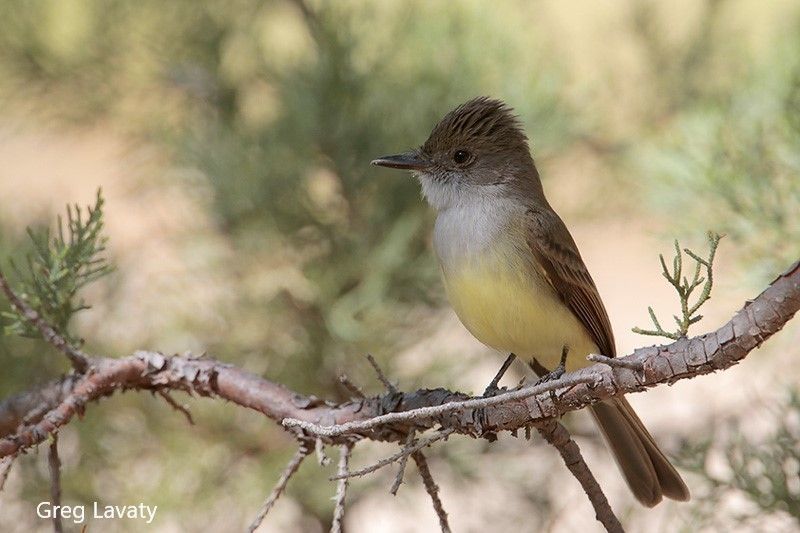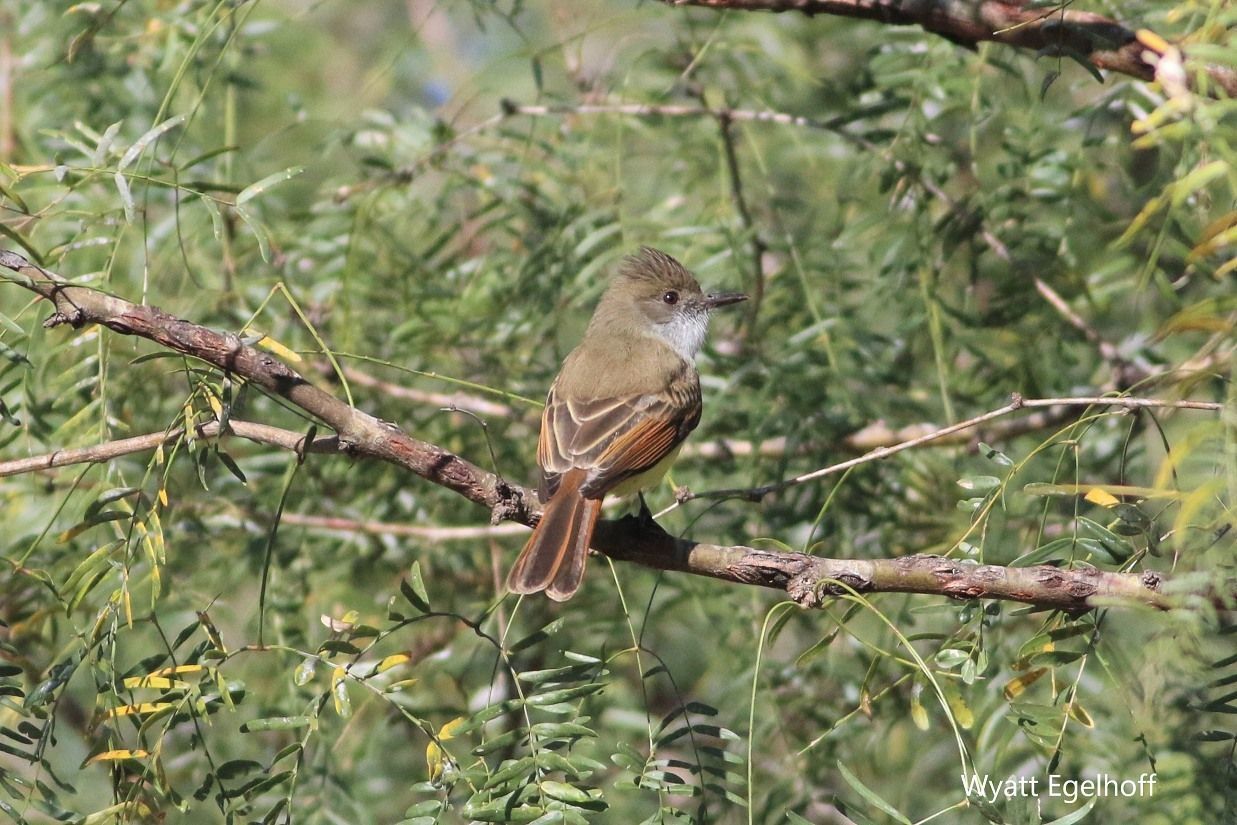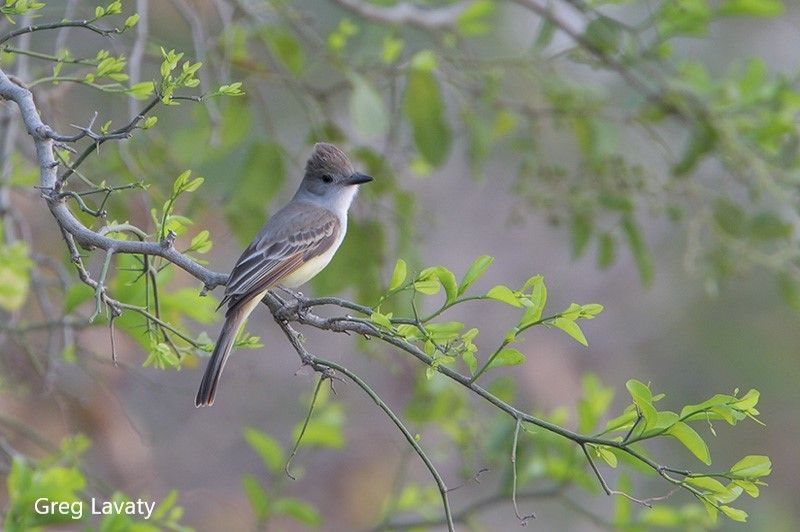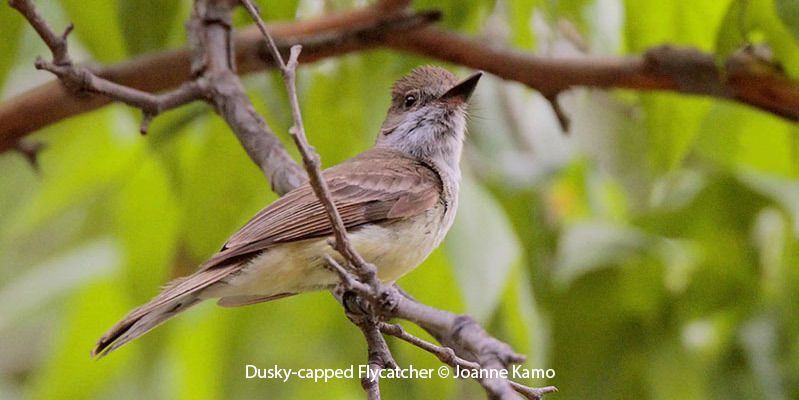Dusky-capped Flycatcher
Myiarchus tuberculifer
Family: (Tyrannidae) Tyrant Flycatchers
Preferred Habitat: Variety.
Seasonal Occurrence: Uncommon.
Profile by Wyatt Egelhoff: While not typically encountered in Texas away from the Chisos or Davis mountains in the summer or (irregularly) the Lower Rio Grande Valley in winter, a Dusky-capped Flycatcher was discovered at Houston Audubon’s Smith Oaks Sanctuary in High Island. The bird was originally discovered in mid-January while Houston Audubon’s Conservation Technicians were conducting routine invasive plant species control. As of February, the bird continues to be seen and heard almost daily along the northern edge of Grackle Pond (between trail markers 32 and 33). This represents an exciting first record for the Upper Texas Coast, and second easternmost record of this species in the United States (just edged out by a 2012 record from Shreveport, Louisiana).
Dusky-capped Flycatchers are a bit slimmer and smaller than most of the other flycatchers in the genus Myiarchus that occur regularly in the United States. They can be most easily differentiated based on call, which consist of a descending mournful “weeeur” (somewhat similar to that of a Red-shouldered Hawk). In appearance, Dusky-capped are rather svelte, with a lemon-colored belly, grayish breast, and brown upperparts. The tail and wings often show some limited reddish or cinnamon color (depending on region), with yellowish secondaries and whiter tertials. The bill is slender and dark (sometimes with a flesh-colored base to the lower mandible). As is typical of most flycatchers, Dusky-capped tend to actively catch flying insects, frequently sallying out from a perch to catch prey mid-air and returning to the same or nearby perch to eat their catch.
This species is found throughout Central and South America in a variety of habitats. Within the United States it is largely restricted to the “Sky Islands” of Southern Arizona, New Mexico, and West Texas, as a breeder, favoring mixed Pine-Oak forest and riparian areas. The Texas breeding population is largely restricted to the Davis Mountains with a smaller number of pairs in the Chisos Mountains. These breeding populations have only established themselves in the past thirty years. In fact, there were only three records of the species in Texas before 1991. The first wintering occurrence of the species in Texas occurred in 2000 in the Lower Rio Grande Valley and have since become more regular (but are still unpredictable) with some winters (such as the winter of 2020/2021) having multiple individuals show up at different sites. There is also a growing number of records of the species away from these two areas, including within the South Texas Brushland (Jim Hogg and Jim Wells counties) and Edwards Plateau (Blanco county).
-
Cornell Lab of Ornithology
-
Field Guide

© Greg Lavaty, www.texastargetbirds.com

© Wyatt Egelhoff

© Greg Lavaty, www.texastargetbirds.com


